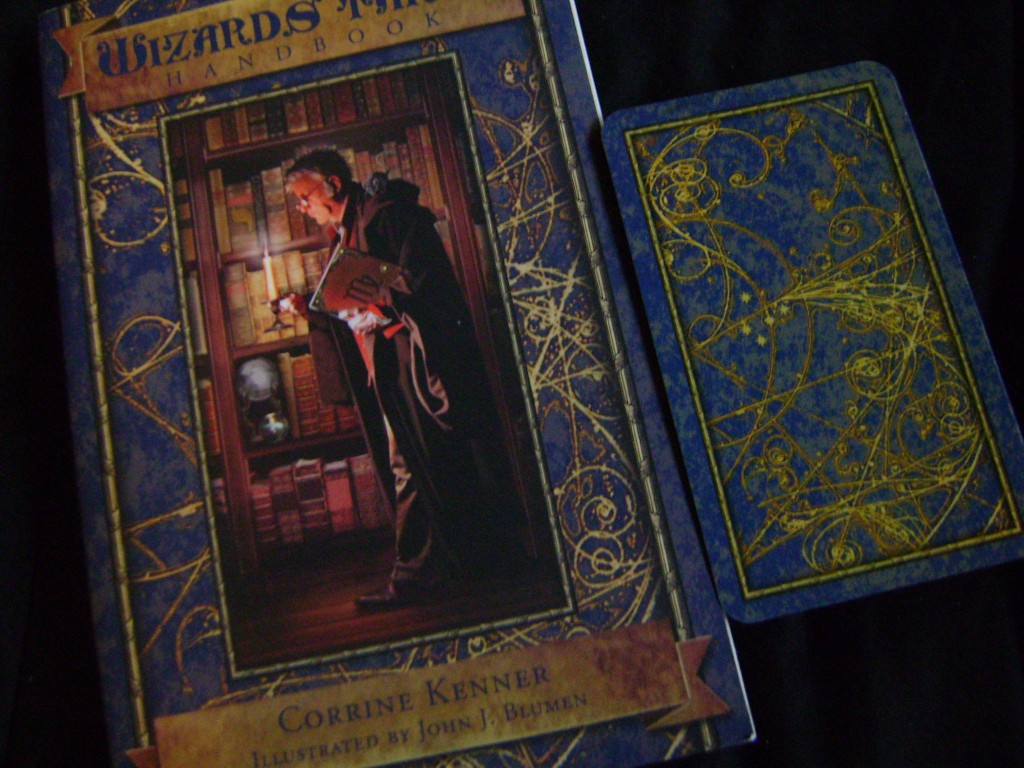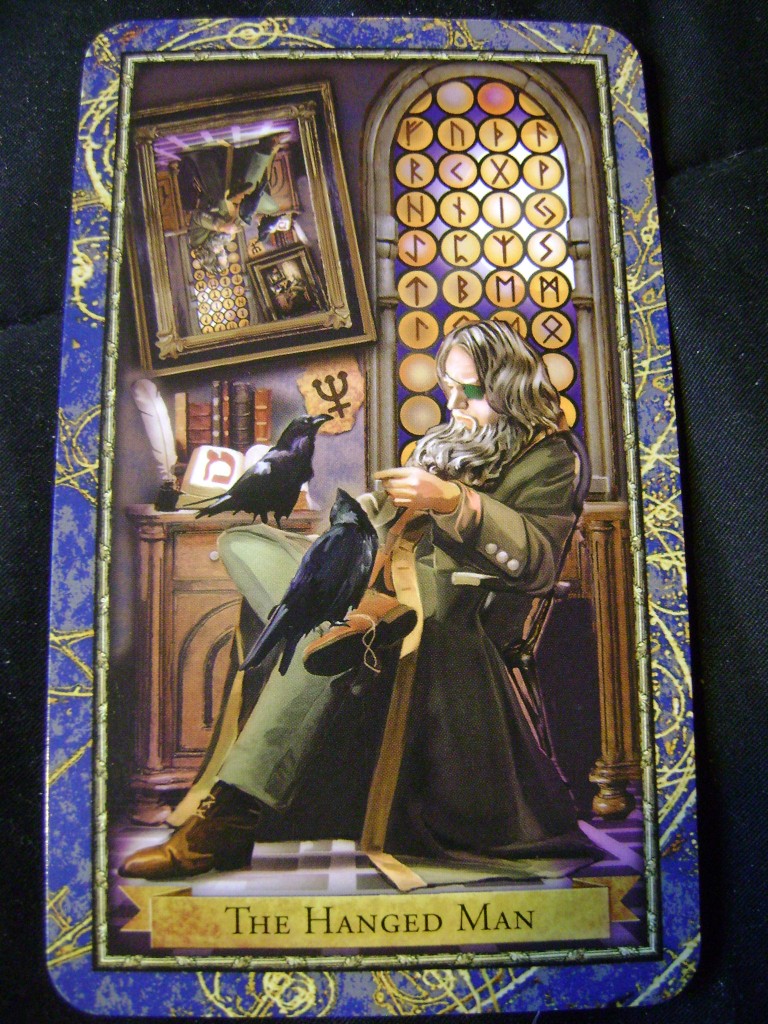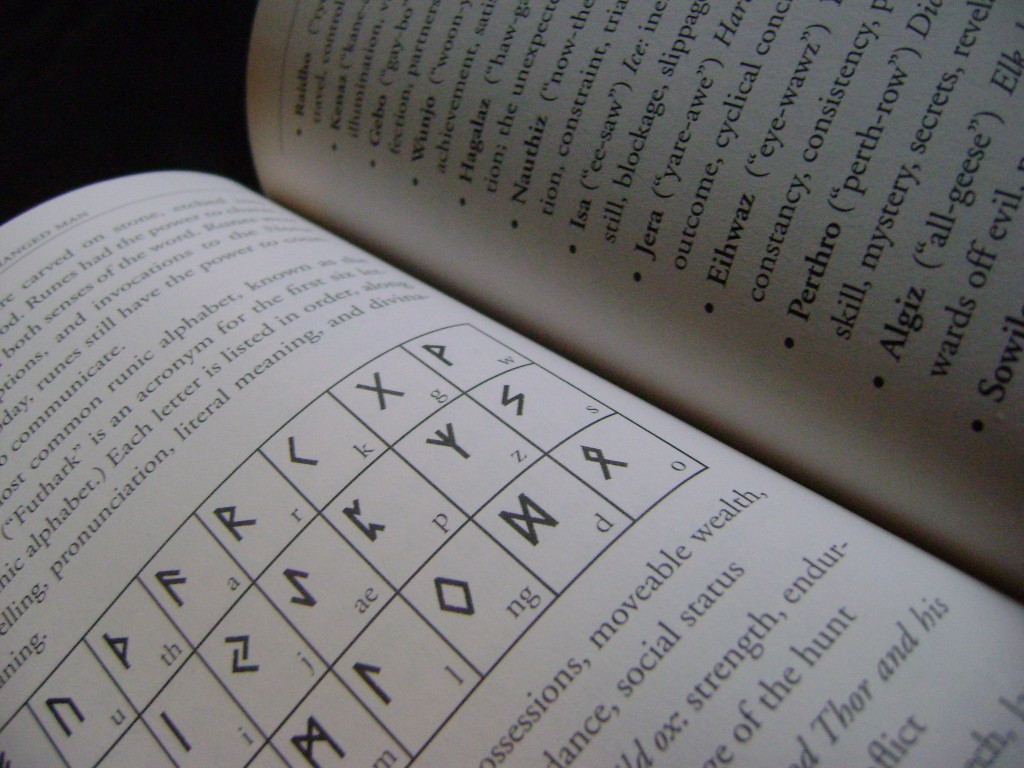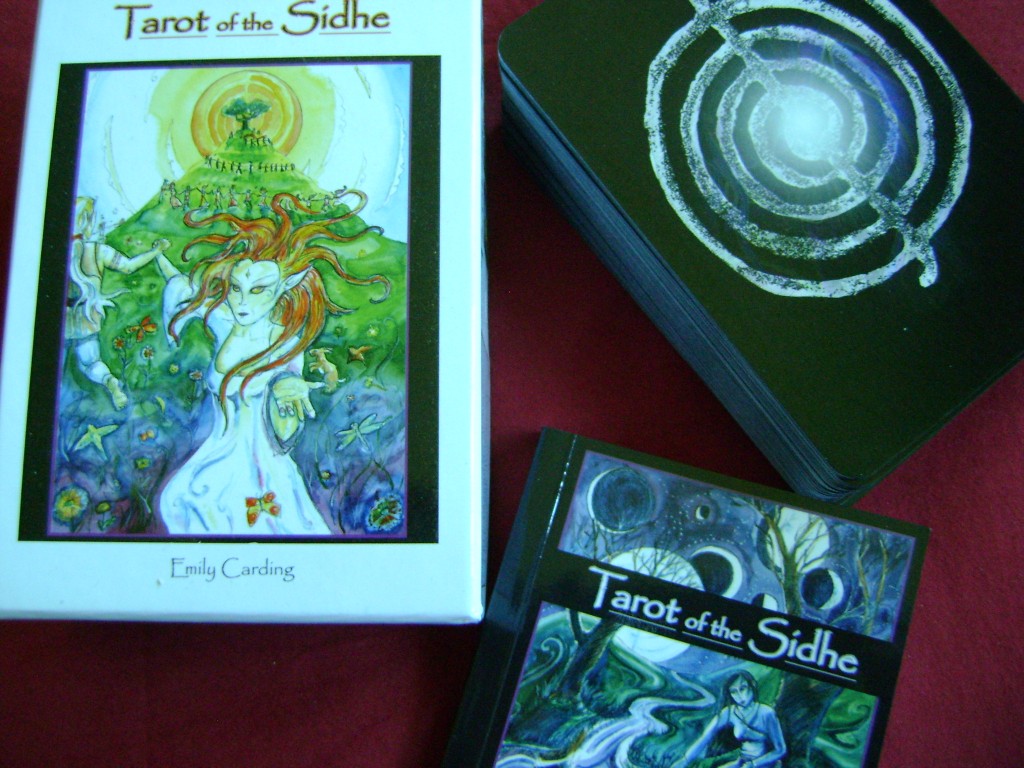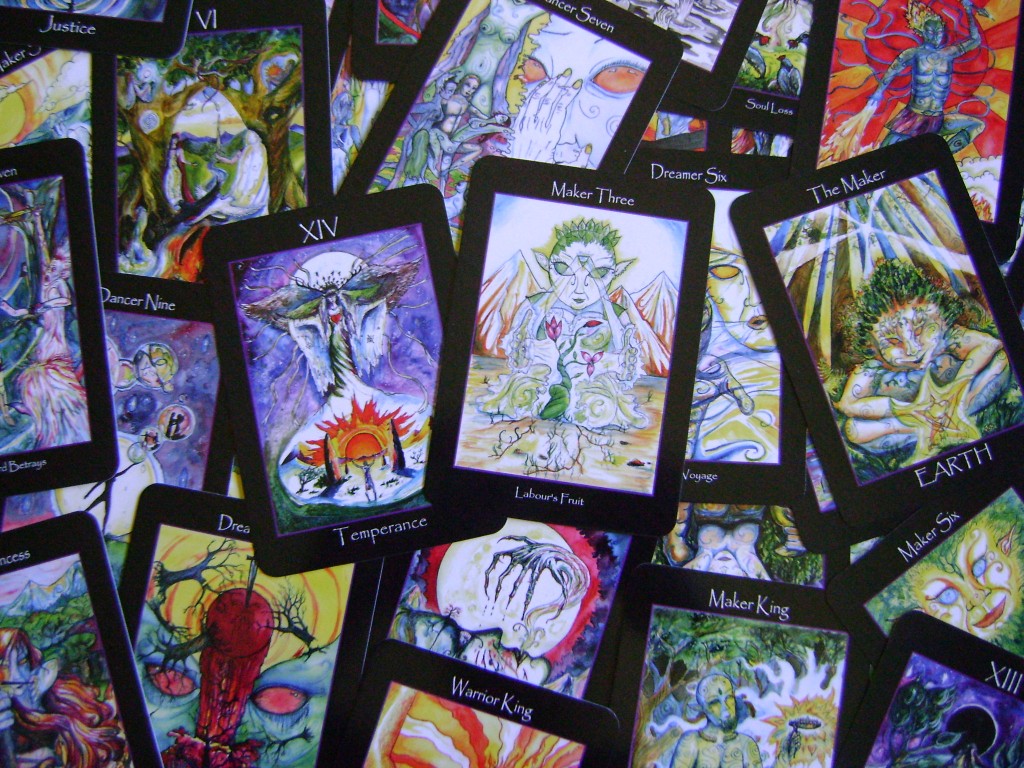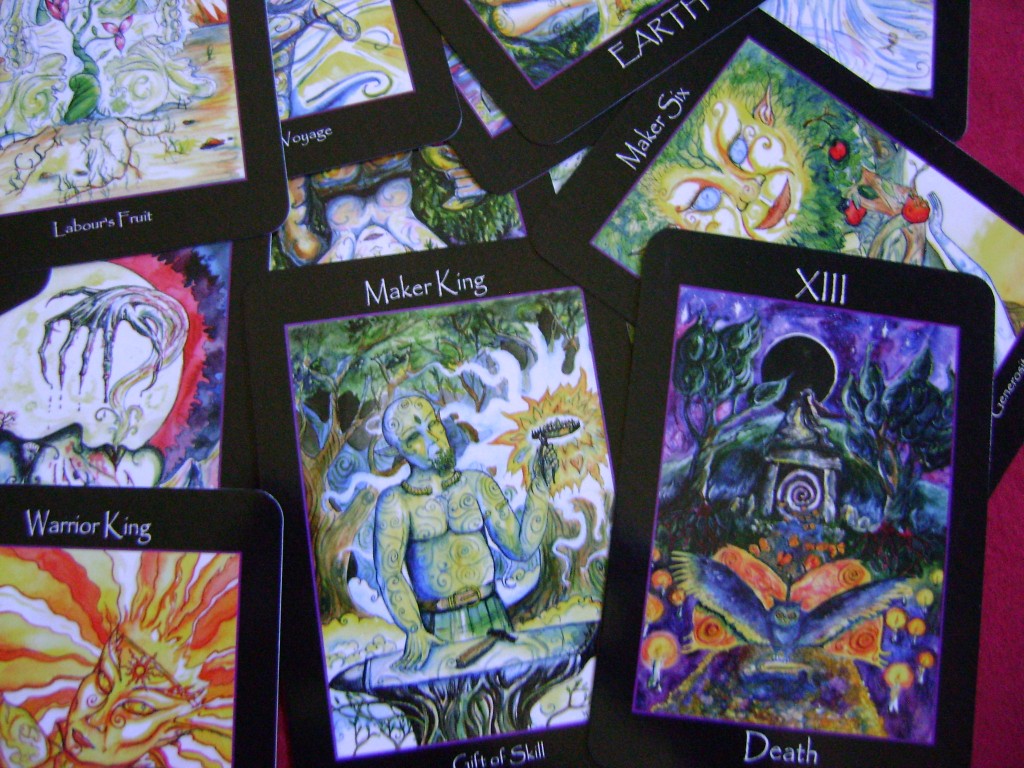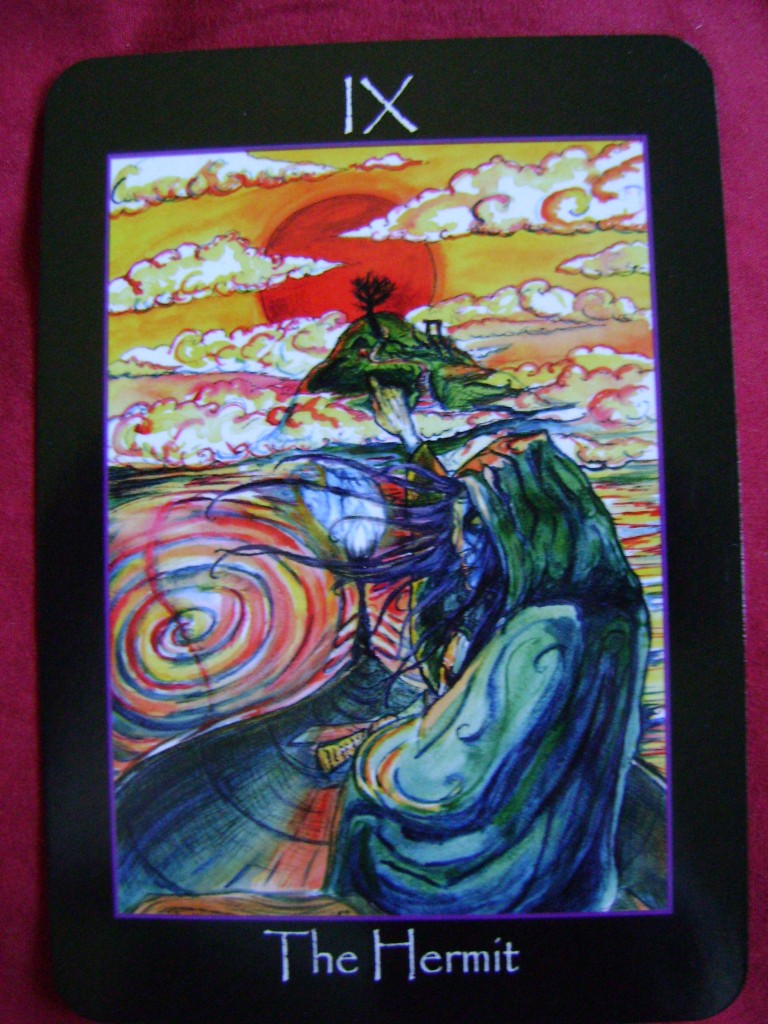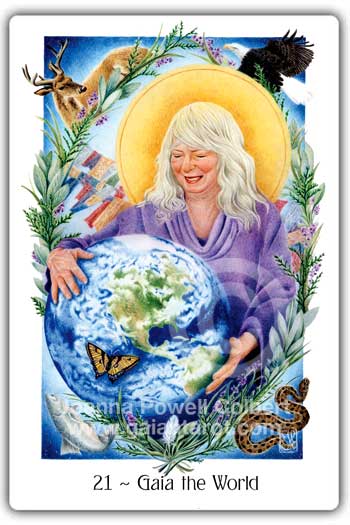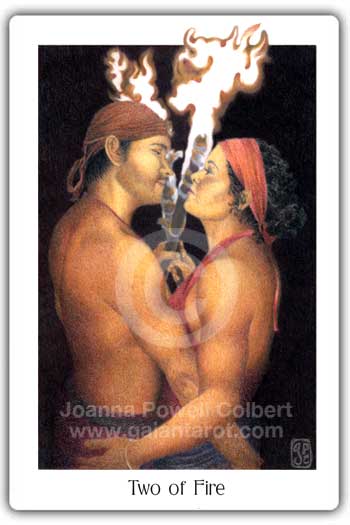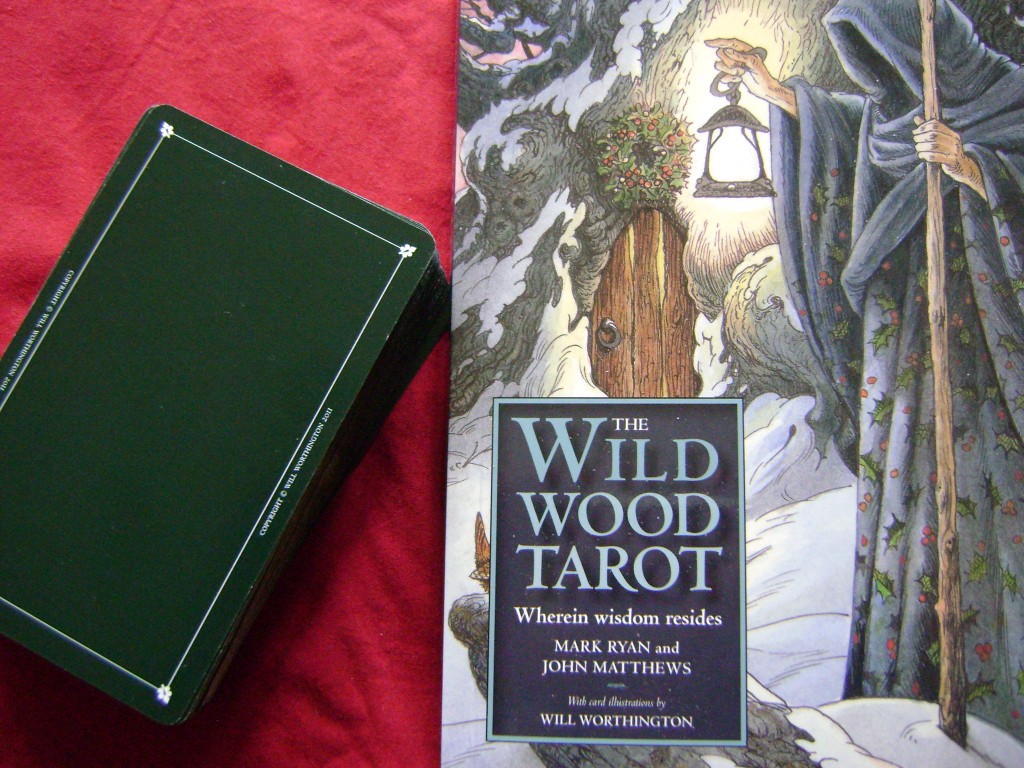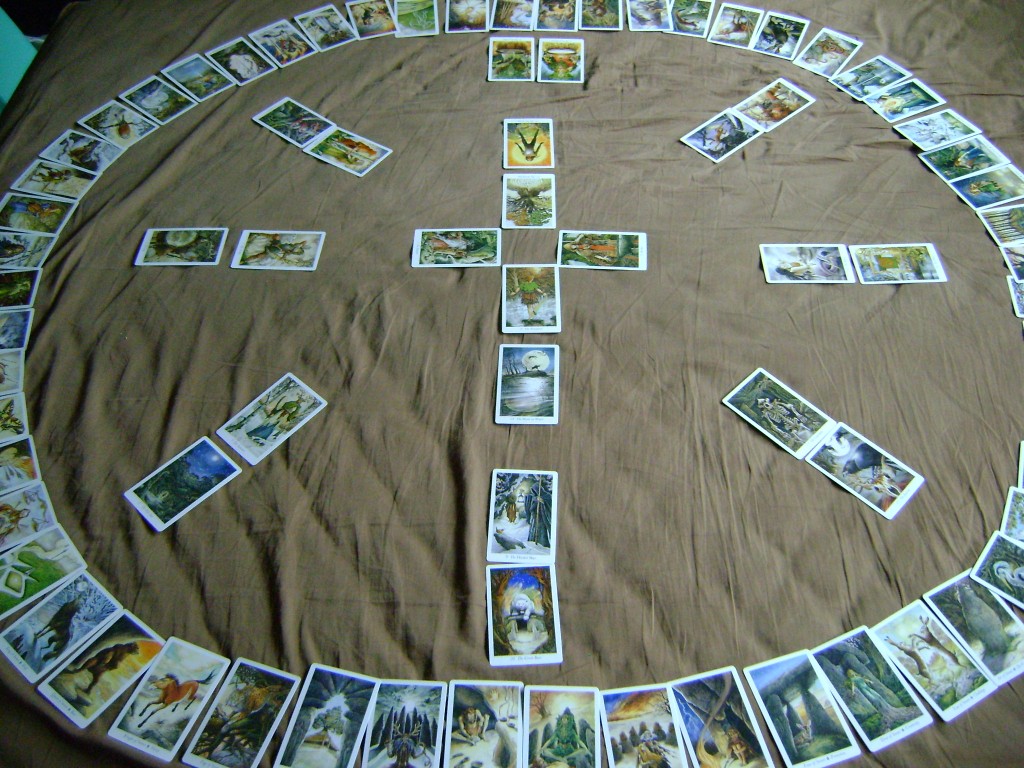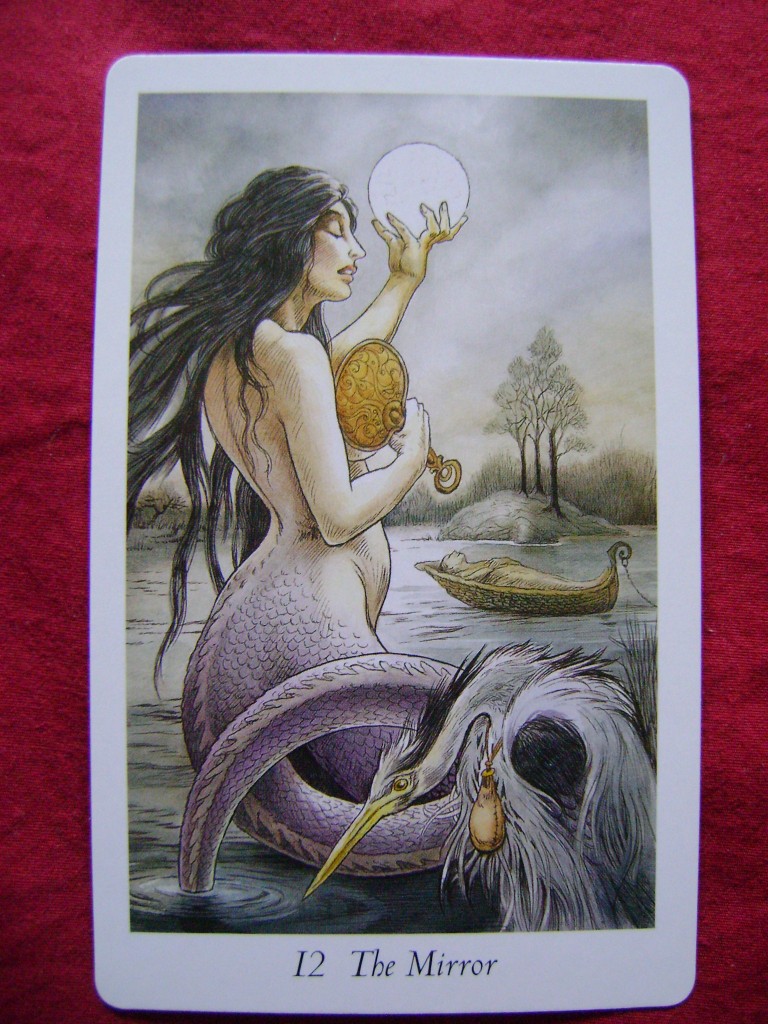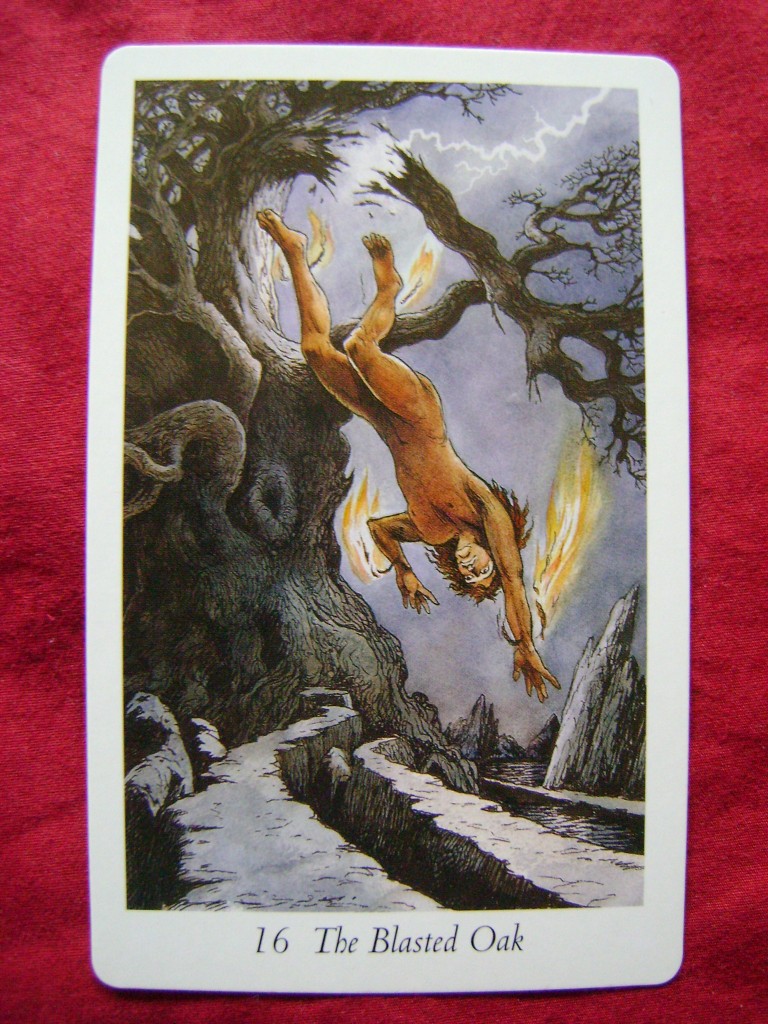When a deck creator goes through the time and effort to research and create a companion book for their deck I feel it is only right for me to take the time and make the effort to read it. Even if I never refer to it again, reading the book helps me understand the world from which the deck was born. It explains the story behind the images, the thinking and symbology used in those images and the intention of the creator of the deck. In the companion book for Wizards Tarot Corrine Kenner goes beyond what I expected. From the opening line of the Introduction, “Welcome to Mandrake Academy” I knew I was in for something different.
The companion book for her deck is a handbook for the students of Mandrake Academy. In other places I have seen parallels drawn with Harry Potter and while that is to be expected it is superficial. Do not take this deck lightly. Ms. Kenner, author of Tarot for Writers, Tarot Journaling, and her newest Tarot and Astrology, has created an academy where students are given the fundamentals in magical disciplines with notes on how to use them in real life. That is something you won’t find at Hogwarts.
Each of the Major Arcana cards is a professor of one magical skill or discipline. This is really quite clever. Take the Hanged Man for example:
Here is Odin , the Norse God who sacrificed himself by hanging upside down on Yggdrasil, the World Tree, to gain wisdom. As a result of his sacrifice he discovered the runes you see in the stained glass window behind him. He is the perfect choice for the Hanged Man in this deck and to be the Professor of Runes. On his knee and foot are perched his ravens, Huginn and Muninn who are Thought and Memory. The painting on the wall is of this same scene upside down and within it is the same painting turned round again. The astrological symbol for Neptune is on a piece of paper under the painting. Neptune is the planet of illusion and is the planet associated with this card. The Hebrew letter Mem is in the book on the desktop. Mem means water and symbolizes the unconcious and subconcious mind. For tarot reading this card is rich in symbolism. The Hanged Man is about sacrifice. He’s speaks of putting yourself in an uncomfortable position for a greater good. He is also about seeing things from a different viewpoint and piercing illusions. In the book Ms. Kenner goes beyond the card itself and includes a fundamental lesson in runes.
A brief history of runes precedes a graphic display of each followed by a list of the names, pronunciation and meaning for each rune. Suggestions for practical applications of the runes is next and then a tarot spread. A study of this section would give a basic understanding of runes and is enough information for the reader to decide whether or not to pursue further study.
Each of the Major Arcana are fleshed out in a similar way. The cards are professors in disciplines that are in line with their meaning within the tarot. The High Priestess is Professor of Divination, The Empress is Professor of Herbal Magic and The Emperor is The Headmaster (of course he is). The key symbols of each card are brought to your attention and explained. Their subject matters get a basic, fundamental explanation followed by a “Practical Magic” section showing how to apply what you’ve learned. A tarot spread relating to the meaning of the card and the discipline it represents wraps up the lesson and you are on to the next Major Arcana with the next professor.
The Minor Arcana are treated a bit differently. As with the Majors there is a black and white illustration of the card itself but the Minors are students at Mandrake Academy and are illustrations of people practicing the magic they are learning. First there is a description of each suit and the meaning of the numbers on the cards. In the explanation of each card there is first a ‘Magic Power’ followed by a ‘Magic Charm’ and then the ‘Key Symbols’ are explained. The ‘Magic Power’ of Ace of Wands for instance is “a card of spiritual passion and enlightenment.” Its charm is “Focus on the Ace of Wands when you want to be inspired.”
The cards themselves are physically the same consistency and body as playing cards though sized like tarot cards. The digital art by John J. Blumen is well done and pleasant. A querent new to tarot would not be frightened away by this deck. I would even use it in reading for younger people. The symbolism and detail is deep and rich enough that you know Ms. Kenner knows her tarot. The deck is very readable for a beginner but has enough depth and subtlety to satisfy a reader with much more experience. This is a good all-purpose reading deck and can be more if you want it to be.
